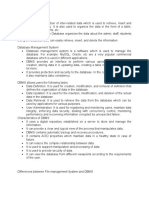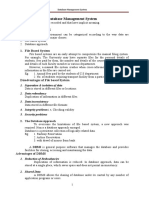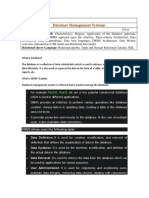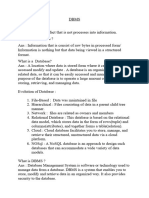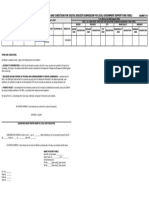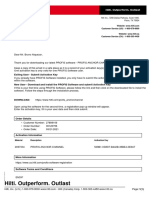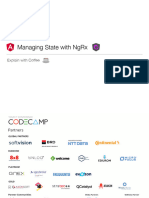0% found this document useful (0 votes)
11 views10 pagesDBMS Module 1 Notes
This document provides an overview of databases, including definitions of data and databases, the role of Database Management Systems (DBMS), and their characteristics. It discusses the differences between file systems and DBMS, data abstraction, data independence, and the architecture of DBMS, including the roles of database administrators and various types of database users. The document emphasizes the importance of data integrity, security, and efficient data management in modern database systems.
Uploaded by
agmane345Copyright
© © All Rights Reserved
We take content rights seriously. If you suspect this is your content, claim it here.
Available Formats
Download as PDF, TXT or read online on Scribd
0% found this document useful (0 votes)
11 views10 pagesDBMS Module 1 Notes
This document provides an overview of databases, including definitions of data and databases, the role of Database Management Systems (DBMS), and their characteristics. It discusses the differences between file systems and DBMS, data abstraction, data independence, and the architecture of DBMS, including the roles of database administrators and various types of database users. The document emphasizes the importance of data integrity, security, and efficient data management in modern database systems.
Uploaded by
agmane345Copyright
© © All Rights Reserved
We take content rights seriously. If you suspect this is your content, claim it here.
Available Formats
Download as PDF, TXT or read online on Scribd
/ 10





